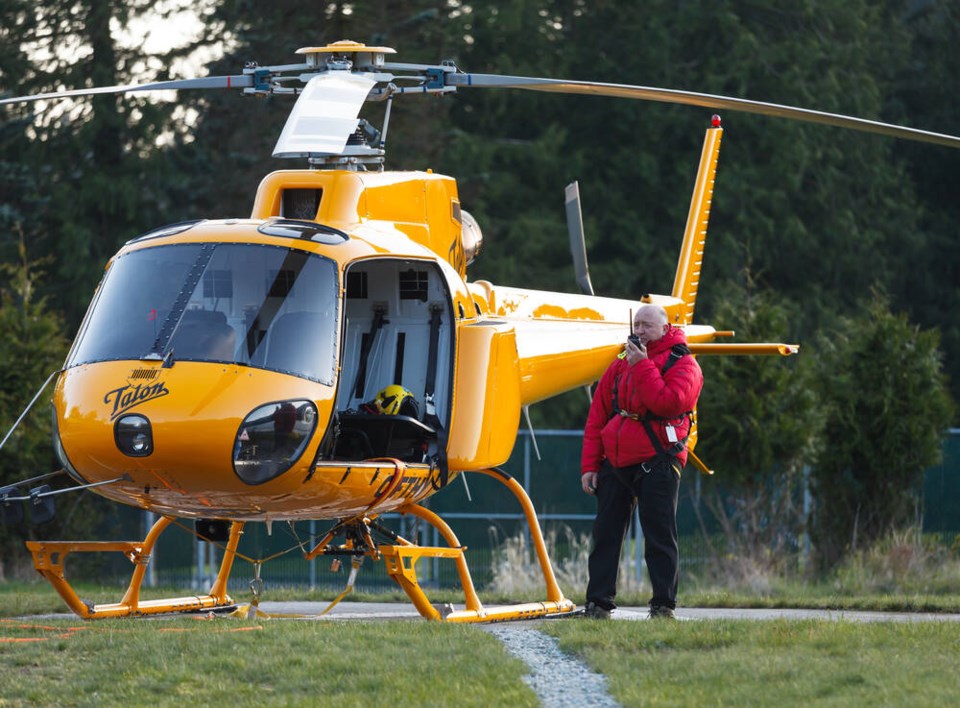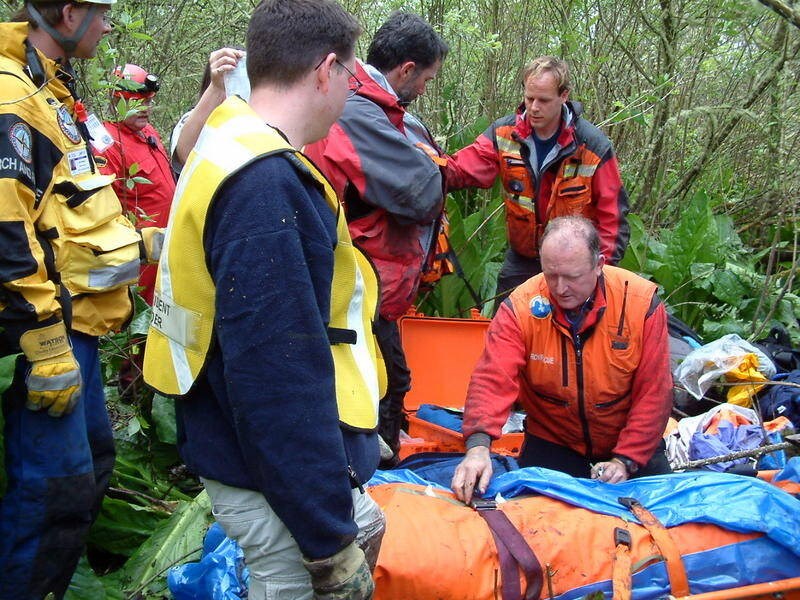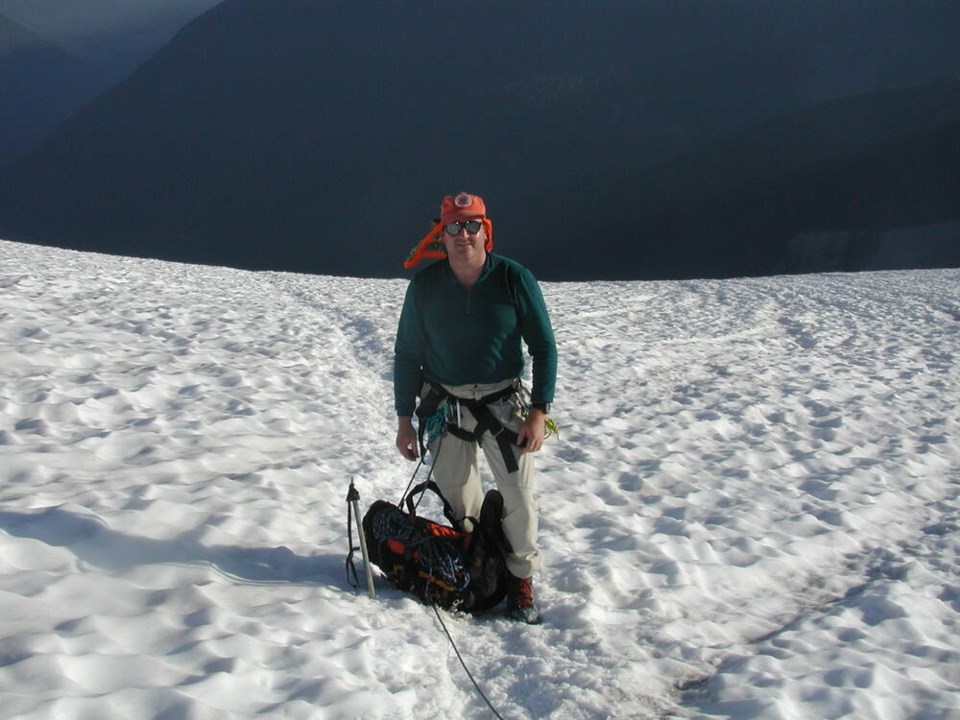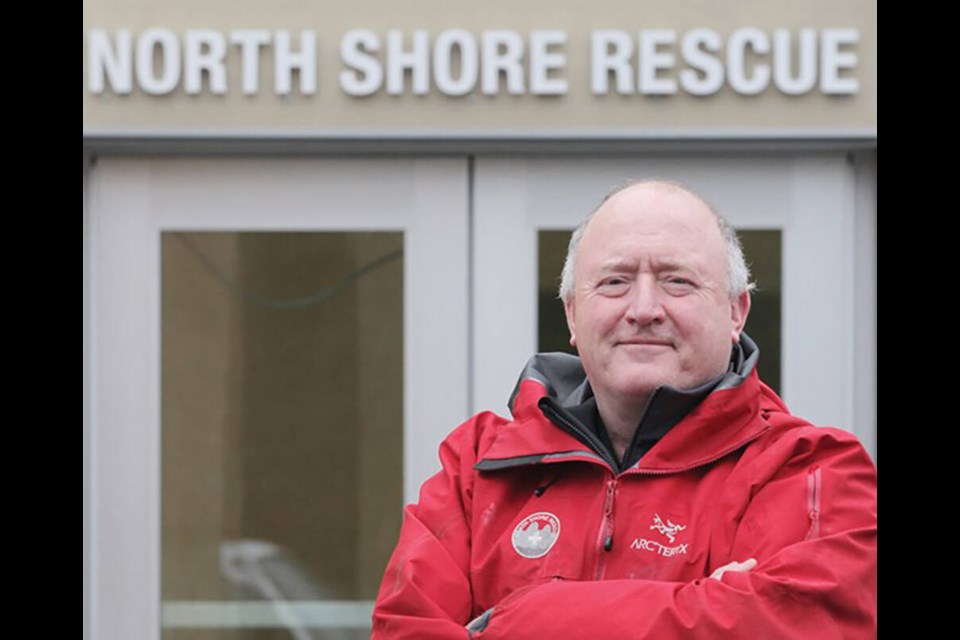It was December of 2012 and had been whiteout conditions for the better part of three days when present day North Shore Rescue leader Mike Danks was long-lined into deep snow drifts on Cypress with then-team leader Tim Jones.
Three days earlier, snowboarder Sebastian Boucher had gone missing in the backcountry. Everyone knew his chances were slim.
But then someone spotted fresh tracks in the snow.
Jones sprang into action, commandeering a helicopter to long-line him and three other members of North Shore Rescue into deep snowdrifts to re-start the search.
“We were up to our necks in snow, following erratic tracks down [the mountain],” said Danks. The tracks disappeared abruptly at the edge of a cliff. Then they heard the snowboarder calling back to them.
“We had to rappel down that cliff band and we had snow and rock fall coming down on us,” said Danks.
For Jones, however, giving up was never an option.
Jones, the long-time leader of North Shore Rescue, who died 10 years ago at the age of 57, was known to most as a larger-than-life personality who could be stubborn, blunt and who did not suffer fools gently.
But for the more than 25 years that he was part of North Shore Rescue, Jones was also the person you’d most want to come find you if you were lost in the backcountry. And most of the time, he was the one leading the search.
During his time with North Shore Rescue, Jones took part in more than 1,600 rescues as well as becoming the face of the organization.
In 2011 he was awarded the Order of B.C.
Danks, who was mentored by Jones after he first joined the rescue team in 1996, took over as team leader a decade ago following Jones’ sudden death. Jones died on Jan. 19, 2014, after he collapsed while returning from the team’s Mount Seymour cabin.

Legacy lives on in rescue team
But Jones’ legacy is still very much a part of the rescue team, said Danks.
Sometimes that’s in the small details – like pieces of equipment that still bear Jones’ handwritten notes. Sometimes it’s the big lessons drilled into him by Jones to “front-end load” all rescue calls: “Get a helicopter going immediately. Don’t even ask the province if we can do it.”
Jones had a vision of what North Shore Rescue could become and was constantly striving towards that, said Danks.
In earlier days, the rescue team had just one vehicle and an Atco trailer in the City of North Vancouver works yard. Under Jones’s command, the trailer was quickly filled with equipment and the number of vehicles grew. The rescue base itself also morphed and expanded to encompass the vast space now known as The Embassy.
It was under Jones that the rescue team first got repeater stations for radio communications installed in strategic backcountry locations. Up to that point, communications were line-of-sight only. If something went wrong, a team was on their own.

Jones set up SAR stations, backcountry caches
Jones also established the team’s SAR outpost stations at Cypress, Seymour, Bone Creek, Cap Gate and Indian Arm – trailers containing needed equipment and a command centre from which to manage searches, which cut out the need to drive the team’s massive command vehicle up a mountain.
Jones also set up the network of caches that still exist throughout the North Shore backcountry – rudimentary shelters with basic supplies purposely placed in difficult terrain where people get lost.
North Shore Rescue doesn’t advertise those locations but “they are strategically located,” said Danks, with the most recent cache established in the drainage of Montizambert Creek, in honour of late British hiker Tom Billings, whom Jones was still searching for when he died.
Chances are, if anyone finds a cache, “they’re completely lost,” said Danks.
In some cases, where conditions have prevented a rescue team from accessing the area, shelter and food stored in the cache can make the difference between survival and death.
Team pushed to embrace technology
Throughout his leadership of North Shore Rescue, Jones was eager to adopt new technology and increase the efficiency of callouts, said Danks.
Under Jones, North Shore Rescue became the first team in the province to be permitted by regulatory authorities to conduct long-line rescues.
Danks has carried on that lesson, pushing for years to win provincial approvals to conduct both night vision helicopter rescues and to conduct nighttime hoists.
“That literally took us five years,” said Danks, recalling that the first bureaucrat he asked “literally laughed at us.”
“It has been a game changer,” he added.
When he died, Jones had been advocating for installation of trail-side cameras in the backcountry.
That project was eventually abandoned, said Danks, but these days, search helicopters have forward-facing infrared cameras mounted onboard that can pick out heat given off by a lost hiker or skier. A newer device is a helicopter mounted reco device that can pick out reflectors often included in outdoor gear over a wide area.
Larger than life personality remembered
To those who didn’t know him well, Jones could be abrasive.
He was infamous for sometimes being tough on rescue team members, calling them out in a dressing down he called “the shred” if he felt they behaved in a manner that was stupid or unsafe.
“He had this drill sergeant mannerism to him,” said Danks. Yet when anyone got to know Jones, “he was a really sensitive, caring individual.”
Jones was also “on” all the time. Variously described as a Triple A type personality, Jones worked a day job as an advanced life support paramedic, but also made it his business to go to 95 per cent of North Shore Rescue calls.
He also had a habit of taking command of every call.
In the wake of Jones’ death, there were huge holes to fill, said Danks – including the need to build up a group of senior search managers and the advanced medical provider program. The AMP program now includes a pool of about 10 local doctors and a registered nurse doing the job that Jones had often filled single-handedly.
The workload has been more shared in the time since Danks took over, and no one person is indispensable. That’s part of planning for the long-term success of North Shore Rescue, said Danks – something always in the forefront of Jones’ thoughts.
“Some of the stuff we’ve accomplished was not even on his radar,” said Danks, adding he wishes he could have a few minutes to chat with his mentor about changes that have come over the past decade.
“I really feel like the magic is happening for us,” he said. “I’d be interested in what he would think.”

This story was included in a special North Shore Rescue print feature that ran in the Jan. 24 edition of the North Shore News. Other stories from the feature include a look at new technology that lets North Shore Rescue locate out-of-service cellphones, a generous donation that funded the purchase of life-saving avalanche backpacks for all members of the team, and a look back at the team's biggest advancements and achievements of 2023. You can also read the complete digital edition of the print feature here.



